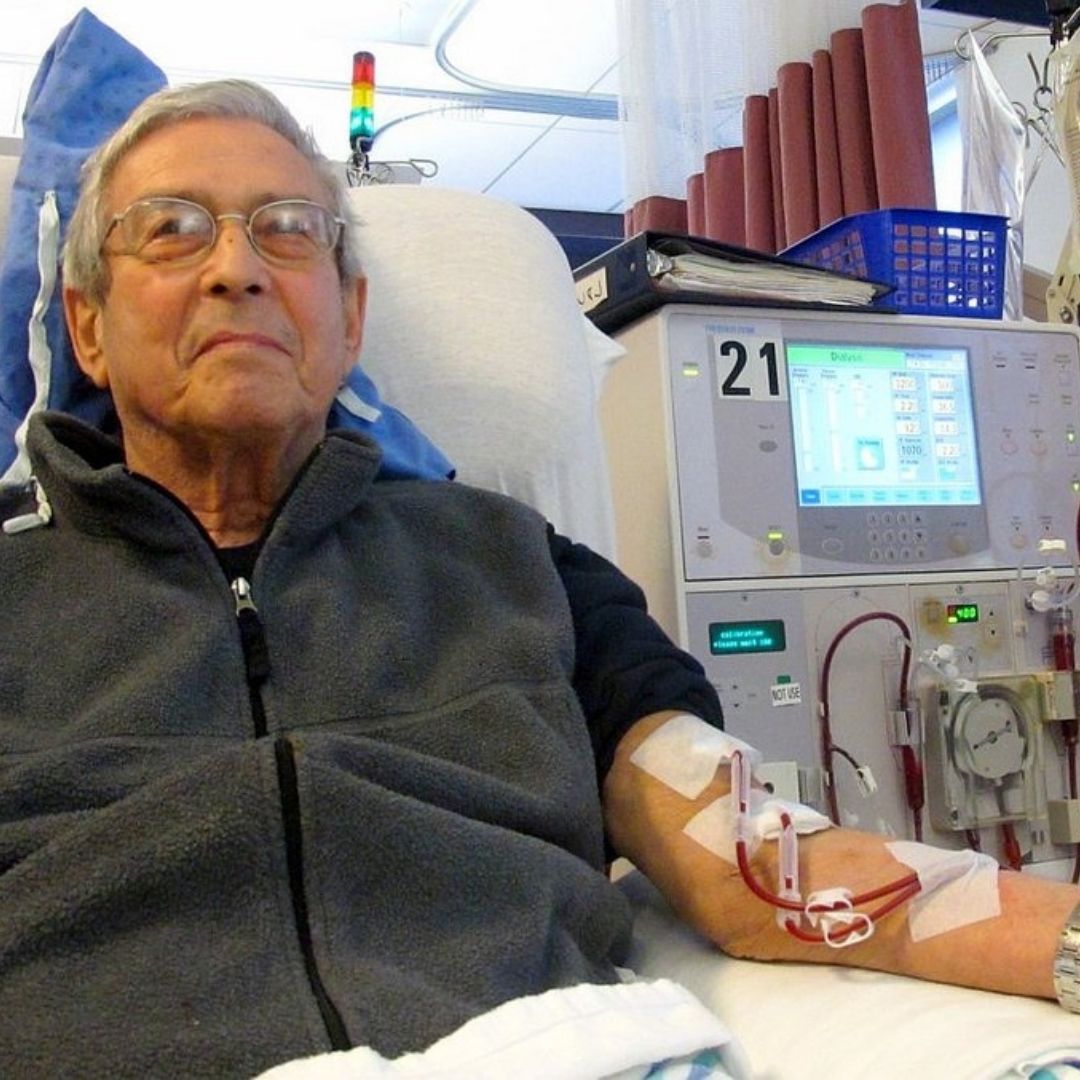
Image Credits: Wikipedia
World Kidney Day: Does High Cost Of Dialysis Kill Kidney Patients In India Every Year?
India, 10 March 2022 12:13 PM GMT
Editor : Shiva Chaudhary |
A post-graduate in Journalism and Mass Communication with relevant skills, specialising in content editing & writing. I believe in the precise dissemination of information based on facts to the public.
Creatives : Tashafi Nazir
For most people, journalism sounds hectic and chaotic. For her, it's a passion she has been chasing for years. With an extensive media background, Tashafi believes in putting efforts on presenting a simple incident in the most interesting way.
The average cost of Dialysis Treatment in India is approximately Rs 1,000 to 15,000 per session. However, the prices may vary depending upon the hospitals in different cities.
World Kidney Day is a global health awareness campaign that focuses on the importance of kidneys, reducing the impact and frequency of kidney diseases. It is celebrated every year on the 2nd Thursday of March, and this year, it is being observed on March 10.
Kidneys are among the essential organs of the body – it removes waste and excess body fluid from your system. But when it fails, a person would need dialysis or a transplant to stay alive. Every year, 2,10,000 new patients develop kidney failure globally.
The number of deaths attributable to Chronic Kidney Disease (CKD) in India increased from 0.59 million in 1990 to 1.18 million in 2016. According to the Million Death Study, the number of kidney failure deaths in 2015 was estimated to be 1,36,000. In 2018, it was estimated that nearly 1,75,000 patients were on chronic dialysis in India, giving a prevalence of 129 per million population. A systematic review estimated that about two-thirds of all patients with kidney failure died without receiving dialysis in 2010.
Dialysis is not only a lengthy but expensive treatment. According to a report, about 49% of patients stopped the procedure, and 13% died within one year due to a mix of financial burdens, multiple comorbidities, poor access, and poor quality.
The average cost of 'Dialysis Treatment' in India is approximately Rs 1,000 to 15,000. However, the prices may vary depending upon the hospitals in different cities. While the government has recently stepped in to provide aid in the form of the Pradhan Mantri National Dialysis Programme, the cost of dialysis or kidney transplant has been inaccessible to most sections of society.
Burnout And Financial Issues
While speaking to The Logical Indian, doctors at Manipal Hospitals said that the main reasons patients stop dialysis treatment in India are 'burnout and financial' issues. Dialysis continued indefinitely as it is for most people with chronic kidney disease is a constant expenditure, and with time, dialysis patients tend to get weaker and require more and more medical care, they said.
"Each session of dialysis depends on the preferences regarding the kind of filter and whether the filter is reused or not," Dr Partha Shetty, Consultant – Nephrology, Manipal Hospital Bengaluru said.
Dr Shetty, however, said that nowadays, dialysis is available across the country in multiple centres, and the cost is not necessarily high.
Hemodialysis (HD) is the most common RRT modality in India. The number of HD stations in the country was estimated at 12,881 in 2018.
Like many of the secondary- and tertiary level healthcare services, dialysis services in India are predominantly driven by the private sector, reflecting low public spending on healthcare. Public-sector hospitals largely manage critically ill patients and those with Acute kidney injury (AKI), leaving limited capacity for accommodating patients on maintenance dialysis.
Travel Burden Increases Cost
Significant inequities exist in access to dialysis. Two-thirds of the Indian population lives in rural areas, where the availability of HD is limited. According to a study, almost 60% of patients on dialysis had to travel 0.50 km to access HD, and nearly a quarter lived 100 km away from the facility. The burden of travel increases costs and exacerbates the loss of wages. Further, women are under-represented (15), and few pediatric dialysis services are available.
Over 1 Lakh Suffer Renal Failure Annually
Also, when it comes to kidney transplants, India has never boasted positive numbers. It was estimated that around 1.8 lakh persons suffer from renal failure every year in India. However, the number of renal transplants done is only about 6,000 (2015-16).
"I think that kidney transplants have increased tremendously in number in the last couple of years. There is, of course, a shortage of living donors and hence we need to promote and strengthen the deceased donor programs in many areas in the country," Dr Shetty said.
He believes that improving the transplant situation depends critically on increasing transplant awareness. For example, many people don't realise that in the long run, transplants cost less than dialysis and another common misconception is that kidney donors don't have normal lives after donation. On the contrary, donors can expect a normal life span and quality of life after donation.
COVID Impact On Kidney Patients
The number grew until the COVID-19 pandemic, during which India lost all the hard-gained progress, with the country witnessing a decline of 43.7 per cent kidney transplants from 9,751 in 2019 to 5,486 in 2020.
"COVID-19 worsened the morbidity fairly severely in dialysis patients. This is because most dialysis patients are older and have many other ongoing medical issues. Transplant patients have low immunity but did fairly well," Dr Shetty said.
In his message on World Kidney Day, Dr Shetty urged people to opt for a healthy lifestyle and take good care of their diabetes and blood pressure.
"If you have a kidney issue, please consult your nephrologist before starting any kind of medicine out of your regular prescription," he said.
Also Read: Tamil Nadu Doctors Use 3D Printing Technique To Save 8-Yr-Old Boy Diagnosed With Bone Cancer
 All section
All section














